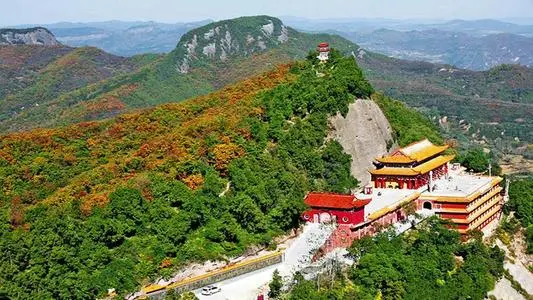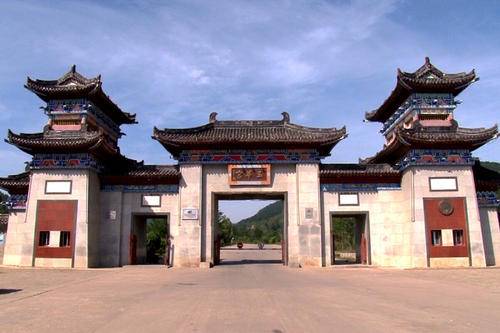Yuhua Palace
Dazzling lights, charming oil-paper umbrellas, Hanfu Daughter's Festival, large flower sea, food and entertainment... The spring scenery of Tongchuan is uniquely beautiful. Through the meticulous construction and professional creation by more than 100 designers over 200 days, Yuhua Palace Scenic Area has become one of the newly popular and picturesque spots in Shaanxi. Strolling through it, you can feel a unique 'daughter's charm'.
Jinsuoguan
Located 20 kilometers north of Tongchuan City, Jinsuoguan is situated south of the Three Passes and north of Shenshui Gorge. It was once a strategic military location known as the 'throat and key point of Yusai and Qin Passes.' To the north lies Guanzhong, a historically contested military area. Today, Jinsuoguan is a gem on the tourist route from Xi'an to Huangling and Yan'an, rich in cultural heritage. Current attractions include the city wall ruins, Liulang Cave, Turtle Rock, Stone Chessboard, and General's Platform. The natural scenery here is unique, with three mountains forming a 'pin' shape, steep and imposing; below are the Five Dragon Pools, with white curtain waterfalls, creating a captivating landscape.
Located in Chenlu Town, 15 kilometers southeast of Tongchuan City, it is named after its 'Ceramic Kiln Exhibition Hall' and is known as the 'Ancient Porcelain Town of the East.' It is the direct successor of the famous Northern Song Dynasty kiln, Yaozhou Kiln, and is the largest and most extensive ancient ceramic kiln in China and even the world. To avoid wasting the 'scraps' of ceramics made, the hardworking and intelligent people used the leftover cans to build walls and pave tiles. These have now become layered, honeycomb-like residences, attracting numerous experts, scholars, cultural enthusiasts, and a large number of domestic and foreign tourists for investigation.
Located in the Fudi Forest Scenic Area, 18 kilometers east of Yijun County, Tongchuan, 30 kilometers from the Mausoleum of the Yellow Emperor, and 150 kilometers from Xi'an, it is a tourist attraction that integrates water entertainment, agricultural sightseeing, and summer vacation. Historically known as the Lake of Yijun, it was gradually forgotten over time but has been redeveloped in recent years. Since 446 AD, the Northern Wei grottoes on the mountainside of Fudi Lake have been established. It is said that during the Northern Wei period, Yijun County was one of the most prosperous areas for Buddhism, and many grottoes were excavated by Buddhist devotees. Although most of these grottoes have been destroyed, some exquisite stone carvings still remain.
Zhaojin Ranch boasts natural dense forests, small wetlands, as well as grass skiing fields, shooting ranges, mountain bike trails, camping areas, barbecue areas, and other recreational facilities. It is a tourist destination where visitors can experience European-style charm.













